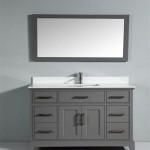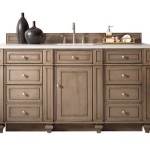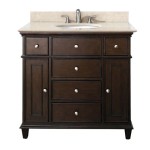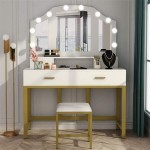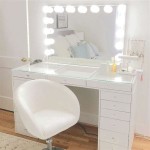Best Material for Bathroom Vanity Cabinets: Choosing the Right Fit for Your Style and Needs
The bathroom vanity is a crucial element in any bathroom, serving as both a storage solution and a statement piece. It's the focal point around which the entire bathroom design revolves. The vanity cabinet, in particular, plays a significant role in creating the overall aesthetic and functionality of the space. There are numerous materials used for bathroom vanity cabinets, each with its own unique advantages and disadvantages. To ensure you make the best choice for your bathroom, it’s essential to consider your needs, style preferences, and budget.
Wood
Wood is a classic and timeless material for bathroom vanity cabinets, known for its natural beauty, durability, and warm appeal. Here's a closer look at different types of wood used in vanity construction:
- Hardwoods: Oak, maple, cherry, walnut, and mahogany are popular hardwoods often used for vanity cabinets. They are known for their strength, resistance to scratches and dents, and unique grain patterns. These woods require proper finishing and sealing to protect them from moisture and ensure longevity.
- Softwoods: Pine, fir, and cedar are softer woods that are more budget-friendly but may require more maintenance due to their susceptibility to scratches and moisture damage. However, their natural beauty and warm tones make them a popular choice for traditional and rustic bathroom designs.
- Engineered woods: Plywood and MDF (medium-density fiberboard) are engineered wood products that offer a more affordable alternative to solid wood. They are typically more stable and less prone to warping or cracking than solid wood, making them suitable for humid bathroom environments. However, they may not have the same natural beauty or durability as solid wood.
When choosing a wood vanity cabinet, remember to consider the wood's finish. A well-applied finish enhances the wood's beauty, protects it from moisture, and makes it easier to clean.
Laminate
Laminate is an affordable and durable material that offers a wide range of colors and patterns. It is made by layering paper over a core material like particleboard or MDF. Laminate vanity cabinets are resistant to scratches, stains, and moisture, making them a practical choice for busy bathrooms. They are also relatively easy to clean and maintain. However, laminate can be prone to chipping and peeling over time, especially along the edges, so it's important to choose a high-quality laminate with a durable finish.
Acrylic
Acrylic is a highly durable and water-resistant material commonly used for bathroom vanity cabinets. It is known for its smooth, non-porous surface that is easy to clean and maintain. Acrylic vanity cabinets are often available in a variety of colors and designs, allowing you to create a modern and stylish bathroom. However, acrylic can be susceptible to scratches, so it's important to use a soft cleaning cloth and avoid using harsh chemicals.
Stone
Stone, particularly granite and marble, is a luxurious and durable material often used for high-end bathroom vanity cabinets. It is known for its natural beauty, resistance to heat and moisture, and easy maintenance. Stone vanity cabinets are highly resistant to scratches and stains, making them a practical choice for those who value durability and elegance. However, stone is a relatively expensive material and may require professional installation.
Metal
Metal, especially stainless steel and aluminum, is a modern and industrial material that is becoming increasingly popular for bathroom vanity cabinets. Metal is known for its durability, resistance to corrosion, and ease of maintenance. Stainless steel is a popular choice for its sleek and contemporary look, while aluminum is a lightweight and affordable option. However, metal vanity cabinets can be prone to fingerprints and scratches, so regular cleaning is necessary.
When choosing a material for your bathroom vanity cabinet, consider factors such as your budget, style preferences, durability requirements, and the overall design of your bathroom. Each material has its unique advantages and disadvantages, so careful consideration is key to making the right choice for your needs. You should also research the reputation of the manufacturer and consider the warranty offered on the vanity cabinet.

What Is The Best Material For Bathroom Cabinets Comparison Of Several Commonly Used Materials

What S The Best Material For Bathroom Vanity Cabinets Allikristé

Best Material For Your Bathroom Vanity Cabinets Lesso Blog

What Types Of Bathroom Vanity Materials Should You Use Newsnews
What Are The Best Materials For Bathroom Vanity Countertops Toulmin Kitchen Bath Custom Cabinets Kitchens And Design Remodeling In Tuscaloosa Birmingham Alabama

Best Material For Your Bathroom Vanity Cabinets Lesso Blog

Which Is The Best Material For Bathroom Vanity Cabinet

Best Material For Your Bathroom Vanity Cabinets Lesso Blog

Best Materials Finishes For Bathroom Cabinets

What S The Best Material For Your Bathroom Vanity Cabinets Flemington Granite


